Threats
Our Activities Create Many Hazards for Cetaceans
Dolphin Deaths in Tuna Nets
World Trade Organization (WTO) rules provide for Dolphin Safe tuna labeling laws. These are occasionally challenged by governments whose tuna fishing companies seek cost reductions by employing methods that are both deadly and cruel to dolphins. Tuna seiners continue to use speedboats and mile-long nets to chase, capture and kill dolphins. The vast majority of the world’s tuna companies have ended these practices, but the method needs to be universally prohibited.
In addition, there are significant numbers of deaths from whales and dolphins getting entangled in discarded fishing gear. To this point, we’ve been largely ineffective in passing legislation which would reduce the numbers, so thousands will continue to die needlessly every year. A global initiative is now underway to combat the growing problem of ‘ghost gear’, and we urge every country to participate.
Government Policies Dangerous to Cetaceans
A disturbing administrative trend is emerging, with some planning, or in many cases already implementing, a number of initiatives which will be devastating to whales and dolphins. Among these are:
- Plans to slash the size of protected marine National Monuments and protected coral islands
- Allowing offshore oil drilling and commercial fishing in sensitive marine habitats, despite the risks to migrating whale populations.
- A green light to the resumption of seismic blasting, used to find oil and gas deep underneath the ocean floor, but which produces sounds so loud that they injure or kill several types of marine life. Cetaceans are particularly vulnerable to these blasts, which are repeated every ten seconds, 24 hours a day, often for weeks at a time. These dangerous proposals must be stopped, using public pressure and, where possible, court action.
Ocean Litter
It is a well established fact that plastic litter in the ocean is a major problem for whales and dolphins. We’ve seen increased media attention on this issue lately, as the world wakes up to the horror of whales and dolphins dying on our beaches with several kilograms of plastic in their stomachs. Belatedly, we’ve started to clean up, with many supermarket chains, restaurants, and other companies promising to stop using plastic packaging and single use plastics like bags and straws. Many governments, from the local to national level, have also begun to introduce legislation. However, with the equivalent of one garbage-truckload of plastic entering the ocean every minute, we still have a long way to go.
Depletion of Food Sources
At the end of 2018, there were only 74 remaining Southern Resident Orcas, leaving them with an effective breeding population of fewer than 30. This is near the point of no recovery. Dying from starvation, not a single calf born had survived over a three year period.
More than half of their diet comes from salmon produced in the Columbia Basin, much of it from the Snake River System. Since 2002, we’ve known from an Environmental Impact Statement that dam breaching is the best solution to recover wild salmon on the Snake River. If the lower dams were breached, it would at least double survival rates, and restore many millions of fish to the Basin. This would give the orcas a fighting chance at recovery. The four lower Snake River dams in Eastern Washington do not provide flood control and produce only low value surplus electricity. This is an excellent example of how, if we’re paying attention, we can take effective measures to mitigate the impact of our actions on the habitats whales and dolphins depend on.

